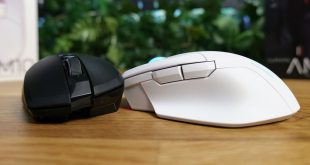Removing the front panel gives us our first glimpse of the included 200 mm fan.
We can also see a number of screws securing the 3.5″ and 5.25″ drive bays. These can be removed to simplify the installation of a 240 mm radiator in the top, though we expect creative modders will see an opportunity for some impressive custom water cooling loops here.
Next, we remove the top cover to reveal the mounting space for a 120 mm, 140 mm or 240 mm radiator or two fans. If a 240 mm radiator is installed the top drive bay can be put back in place, though this does limit cooling potential to a single top exhaust fan.
The top panel's wires run through cut-outs and it is a good idea to loosen these from within the case before removing the panel.
Starting from the bottom we can see there are two hard drive caddies on the right-hand side and space to fit a standard ATX PSU.
Directly above that we can see the motherboard tray with a small cut-out and two additional cable routing holes.
On the far right we find the 200 mm fan. This fan is rated to deliver 35.40 CFM of airflow at 500 RPM with a maximum noise level of 19.5 dBA. Removing the drive bays in the top allows for the installation of two 120 mm or two 140 mm fans instead.
Moving up further we can see the 120 mm fan on the left-hand side. This fan is rated to deliver 36.40 CFM of airflow at 900 RPM with a maximum noise level of 21.5 dBA. Alternatively, the fan can be replaced with a 140 mm fan.
A closer look at the motherboard tray cut-out shows it is relatively small.
Changing our angle we can see the 200 mm fan and additional cable routing holes.
The drive cages can be removed entirely. Theoretically this allows for the installation of a radiator in the front, though this sacrifices additional storage options.
A lower point of view shows the mounting holes in the top of the case.
This shot shows the large space available for cables under the motherboard tray and behind the hard drives.
Two 2.5″ drives can be installed in the cage in the bottom right of the case.
A final shot of the internals gives us a better view of the drive cage in the bottom right corner. Drives are secured with an included rubber spacer and screw.
Aerocool has made sure to label the case's drive caddies. Although more experienced builders will quickly remove the sticker, those new to building systems may find this helpful.
The caddies themselves use a clip mechanism holding the two sides together.
Simply sliding both sides of the caddies apart allows for the hard drive to be lined up with the pins. Pushing the sides back together secures the drive in place.
Solid state drives can be secured with 4 screws, a standard but effective method.
Rather than meticulously plan our build, we are most interested in finding out how forgiving the case is when we pay as little attention to cable management as possible. Keeping the path of airflow for our cooler clear was simple and we completed our build without any issues.
It is worth noting that the location of connectors on the motherboard does impact cable management options. Our specific motherboard's connectors are situated on the right-hand side of the case, leaving some cables to bulge outwards. However, it is not feasible for any manufacturer to accommodate every possible motherboard design.
One last shot from the top before we close the case and run our tests.
 KitGuru KitGuru.net – Tech News | Hardware News | Hardware Reviews | IOS | Mobile | Gaming | Graphics Cards
KitGuru KitGuru.net – Tech News | Hardware News | Hardware Reviews | IOS | Mobile | Gaming | Graphics Cards



















The core cube of the case is identical to the Xigmatek Aquila, it’s just the plastic and connectors that are different.
I really like the look of this – very attractive, and inexpensive. going to order one.
it could’ve been a good case for me… the only thing restricting me in acquiring one in the near future is the psu length restriction… max is at 160… while my psu is at 180… >.<
Does the front intake fan have a dust filter?